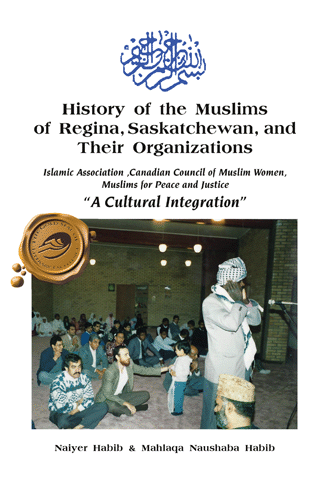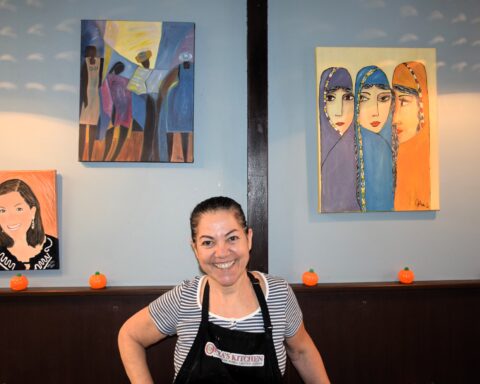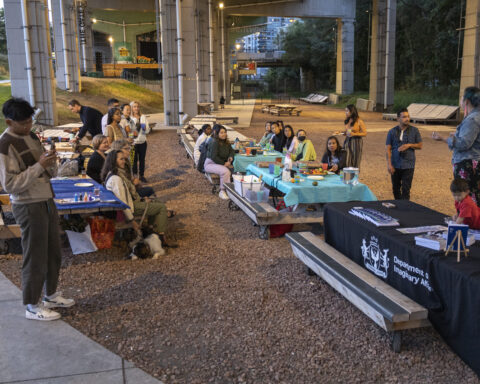Ever since Muslims began settling in the Canadian prairies, they’ve built bridges with their new community while maintaining their ties with their traditional culture.
A devoted Muslim couple who moved to Regina, Saskatchewan in the ‘70s were especially involved in establishing mosques, cultural schools and building bridges between their Muslim community and Canadian society.
History of the Muslims of Regina, Saskatchewan, and Their Organizations is their attempt to comprehensively document how Muslims formed communities and adapted to life in Saskatchewan.
When you open the book, the table of contents looks more like an index because of the detailed chapters and sub-chapters. This historical text feels almost like a scrapbook, chronicling the lives of Muslims in Saskatchewan, told from the Muslim couple’s perspective.
The 645-page book contains a sizeable amount of photographs, correspondence, newspaper clippings, meeting and conference minutes and agendas as well as other supporting documents. For example, for each Islamic centre and mosque opening ceremony mentioned, there are speeches and programs.
The publication is written specifically with the Muslim community in mind. While there is a small glossary at the back of the book for those unfamiliar with the terminology used, the book contains a lot of detail regarding the faith and its teachings.
 Involvement in their community
Involvement in their community
The authors, Naiyer and Mahlaqa Naushaba Habib, both played key roles in the local Islamic organizations that are covered in the book. Mahlaqa served as the president of the Canadian Council of Muslim Women (CCMW) and a board member of the Islamic Association of Saskatchewan, Regina. Naiyer served as president of the same organization in various terms between 1977 to 1998.
Mahlaqa also started a weekly Islamic school in their home from 1976 to 1984 before it was moved to the local Islamic centre and mosque. Both served as trustees on the Muslims for Peace and Justice (MPJ) board.
“We and the Westerners had mutual respect for each other.”
After the terrorist attacks on America on September 11, 2001, the MPJ organization was formed. Members recognized the public perception of Muslims needed to be tempered, so the Habibs and other Muslims in the community made their voices heard in the media, through interviews and editorials, to present their faith in a positive light.
“We adopted the path of integration while maintaining our religious priorities and culture based on Islam,” the Habibs write. “We were flexible and accommodative. We mingled with the society at large and provided them opportunities to mingle with us. We and the Westerners had mutual respect for each other.”
Naiyer spent his life working as a cardiologist, researcher and medical administrator in Regina until he retired in 2004. Mahlaqa has her Master’s degree in Political Science. The two now live in Abbotsford, B.C.
What motivated the couple to write this book was that they wanted to preserve their community’s history for future generations.
In the book, they explain that they wanted to “leave a history of Muslims for Peace & Justice for the coming generations to see what we achieved with our limited resources as to finance and as to personnel.”
Exploring rich, personal histories
Beyond their own experiences in Canada, the chronologically arranged book also recounts the history of the first Muslims who settled in the province, including the communities of Regina, Saskatoon, Davidson and Swift Current.
The history includes a story about the first known Muslim in the region, Mohammed Ali Ta Haynee, who was born in 1864 in the Middle East.
Haynee was a captain in the Ottoman empire in 1885. He moved from Lebanon to North Dakota in 1889 before making his way to Regina at the beginning of the 20th century. He had 17 children and lived to the age of 108.
The City of Regina named a street in his honour in the Glencairn area in the eastern part of the city.
The book also recounts the history of the first Muslims who settled in the province.
Another personal account describes two of the CCMW members who share their reasons for wearing the hijab and the mixed responses they receive from wearing it in public.
One of the women, Zia Afsar, says she chose to wear the hijab in her 40s. She explains that this was based on her own decision and not as a result of pressure from her family.
“People talked to me slowly as if I did not understand English or else they used hand gestures to make me understand the conversation,” she writes. When a man of Asian heritage asked her if she could speak English and she responded to his question, he was “surprised to hear me replying in English.”
As seen in the above examples, the book contains two distinct perspectives from the men’s and women’s organizations, which is a refreshing change from many historical texts.
As the title of the book suggests, it is a true reference book that immerses the reader in the rich history of Muslim cultures in Saskatchewan.
Florence Hwang has a history degree from the University of Regina. She is a media librarian and a freelance writer with various publications.
Florence Hwang is a Saskatchewan-based freelance writer. She is a media librarian who loves storytelling. She has written for La Source newspaper, CBC Saskatchewan, Saskatchewan Folklore and South Asian Post.





